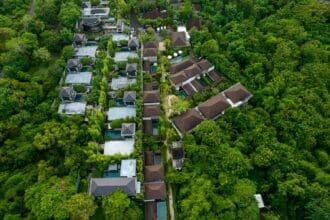Content
In the investment world, the term blue chip has long been synonymous with security, stability and premium quality. Borrowed from the stock market, where it describes the shares of the largest and most financially sound companies, it now finds its well-deserved place in the real estate sector. For the Bulgarian investor looking to diversify their portfolio abroad, understanding the concept of blue chip property is key to making informed and strategic decisions.
But what exactly turns a property into a “blue chip”? It’s not just about luxury or high price. It’s a category of assets that possess a specific set of characteristics that guarantee long-term value, sustainable income and high liquidity, even during times of market turbulence. In this article, we’ll take an in-depth look at what these premium properties are and why they are considered the cornerstone of any serious investment portfolio.
What does “blue chip” mean in the context of real estate?
A blue-chip property is a top-tier real estate asset that features a prime location, exceptional construction quality, an impeccable developer reputation and strong, ongoing potential for rental income generation and value appreciation. These properties are located in the most desirable and prestigious areas of major global cities or exclusive resort destinations.
Unlike speculative investments that rely on quick but risky profits, blue chip properties are aimed at investors with a long-term horizon. They offer capital protection and stable, predictable returns. They can be seen as the ‘gold standard’ in real estate – assets that will always be sought after by solvent tenants and buyers.
Key features of “blue chip” properties
Not every expensive property can be classified as a “blue chip”. To fall into this elite category, an asset must meet several strict criteria simultaneously:
- Prime Location (Location, Location, Location): This is the most important factor. “Blue chip” properties are located in the heart of economic and cultural life – central business districts, historic downtowns, upscale residential neighborhoods or waterfront areas with limited supply. Examples of such locations are Downtown Dubai, neighborhoods such as Mayfair in London, the center of Milan or beachfront villas in exclusive parts of the Greek islands.
- High quality construction and design: these properties are built by reputable construction companies using the highest quality materials and modern technology. The architecture is often the work of world-renowned designers and the buildings offer luxury amenities such as concierge, fitness centers, swimming pools and impeccable maintenance.
- Income stability and low risk: thanks to their location and quality, these properties attract the best tenants – corporate clients, diplomats, high-ranking executives or wealthy individuals. This ensures a steady and secure rental cash flow and minimal vacancy risk. Studies show that during economic crises these properties retain their value much better than the rest of the market.
- High liquidity: blue chip properties are always in high demand. This means that if an investor decides to sell, they will be able to do so relatively quickly and at a good market price without having to make significant discounts.
Advantages of blue chip property investment
Investors allocating capital to this asset class benefit from a number of strategic advantages.
First, they get security and capital preservation. In an uncertain world, owning a physical asset in a top location is one of the most reliable forms of wealth preservation. Second, there is significant potential for long-term value appreciation. Because the supply of properties in these elite areas is very limited, their prices have a steady tendency to increase over time.
Third is prestige. Owning such a property is not only a financial investment, but also a status symbol. Last but not least, these assets allow for excellent portfolio diversification, balancing riskier investments with an asset that brings stability.
Examples of markets with blue chip properties
For the Bulgarian investor looking at international markets, several destinations stand out with the availability of blue chip opportunities:
- Dubai, UAE: Areas such as Downtown Dubai (around Burj Khalifa), Palm Jumeirah and Dubai Marina offer world-class apartments and penthouses. Branded residences managed by luxury hotel chains are prime examples of “blue chip” assets, guaranteeing both income and perfect maintenance.
- Italy: an apartment in a renovated historic building in the centre of Milan or Rome is a classic “blue chip” investment. These properties combine architectural value with access to the best shopping streets and cultural attractions.
- Greece: the market offers luxury beachfront villas on islands such as Mykonos and Santorini, as well as upscale apartments in Athens neighborhoods such as Kolonaki. Limited supply and constant tourist demand keep their value high.
Conclusion
Investing in a blue chip property is not just buying a real estate asset, but strategically positioning yourself in the most sustainable and prestigious segment of the market. It’s an approach that requires higher upfront capital, but in return offers unparalleled security, stable income and long-term growth. For investors who value quality and want to build a stable and diversified international portfolio, blue chip properties represent the highest standard to which they can aspire. Understanding their characteristics is the first step to securing a financial future built on a solid foundation.
You might also like:
- Greece Property Market 2025: Growth Cools, New Golden Visa Rules & 2026 Forecast
- Investing in Southern Europe with a German Income: A Complete Guide to Mortgages and Taxes (2025)
- Cheap Spanish beachfront properties up to €50 000: Reality or myth?
This post is also available in: Български







